Shifting from Manual to Automatic
By partnering with its suppliers as a knowledge resource, this job shop made a successful transition from manual to CNC thread grinding, raising productivity and attracting new business with its increased capabilities.
Share



.png;maxWidth=45)
DMG MORI - Cincinnati
Featured Content
View More
Hwacheon Machinery America, Inc.
Featured Content
View More


Autodesk, Inc.
Featured Content
View More
ECi Software Solutions, Inc.
Featured Content
View More
Many things must be taken into consideration whenever a job shop makes a significant capital investment, such as a new machine tool. Will it outperform the equipment it’s replacing or provide additional capabilities to the point of attracting new business? How does a shop choose the make and model with the right specs for a particular application? What options should be considered, and how steep is the learning curve? How will this new machine affect workflow, and what’s the backup plan should the primary operator be called away?
And then, once the decision has been made to invest in this new technology, how does a shop make sure that it’s meeting the machine’s full potential, safely wringing out every last ounce of productivity that it possibly can?
After deciding to make the leap from manual to CNC thread grinding and invest in a new machine, Tracey Gear & Precision Shaft of Pawtucket, Rhode Island, reached out to its suppliers, including the grinding machine OEM and an abrasives expert, to come up with a process that would enable it to more productively grind threads from solid shafts. After testing and tweaking until everything was dialed in for high productivity, the shop was able to slash previous cycle times and add capabilities that led to making new parts for existing customers as well as attracting new business opportunities.
An examination of this process of transitioning from manual to CNC directly links how paying attention to details such as machine specifications, abrasives formulation and even proper coolant choice can deliver payoffs including reduced setups, faster cycle times, more aggressive material removal and, ultimately, a higher quality finished part.
Building Confidence
Established in 1945 by Leo Tracey and led by his sons since the early 1970s, Tracey Gear has evolved over the years to its current form as a gear and shaft specialist with customers nationwide. Its products include replacement parts for elevator repairs, aftermarket truck components and soft drink packaging. It is now transitioning into its third generation of private ownership with Doug Tracey as the vice president of engineering. He recalls the point in 2013 when the company’s old NC thread grinders began to fail: “The mechanics were sound, but the electronics needed work,” he says. “So we had to decide whether to pay for the repairs and continue limping along with the same old machines, or go ahead and invest in a new CNC thread grinder.”
Due diligence led them to Drake Manufacturing, an OEM that is known for its quality thread grinders, among other machine tools. Visits to its facility in Warren, Ohio, led Mr. Tracey and Brian Carvalho, his grinding foreman, to the GS:TE 200 external thread grinder. Seeing the machine in action was both necessary and convincing.
“Brian is our lead grinding specialist, so it was critical for him to feel confident about operating the machine as we transitioned from manual to CNC,” Mr. Tracey says. “And not just running it, but pushing it to see what we could get out of it. That’s why it was great to be able to do runoffs under Drake’s supervision. I wanted Brian to have the confidence to be aggressive with the machine once we had it back on the shop floor.”
Once a purchase order had been issued for the new machine in 2014, blanks from an existing Tracey Gear project were brought along to Drake’s facility for the runoff. The first test went well, and the results continued to improve as Mr. Carvalho increased the speed, soon cutting the top cycle time achieved on Tracey Gear’s manual machines by half, even as it delivered dead-on accuracy and a premium finish. “It did everything we asked it to do, and more,” he says.
System Specifications
During testing of the Drake thread grinder, its new owners were impressed by the material removal rates of the machine’s stock grinding wheels, which are manufactured by Norton Saint-Gobain Abrasives. Wanting to capitalize on the machine tool’s powerful capabilities—especially its ability to cut finished threads onto a blank shaft, without the need for preliminary material removal or final polishing on a separate machine—Tracey Gear reached out to Norton to determine not only which wheels would work best for the 4140 and 8620 steel it works with most often, but also which would be most effective on more-difficult-to-machine metals such as 17-4 PH stainless steel. That’s when Phil Plainte, application engineer for Norton, first visited the machine shop, spending most of a day learning about the company’s activities and applications.
Tracey Gear’s Drake GS:TE 200 is a rigid machine with high static and dynamic stiffness provided by linear motors on linear ways, and with a 12-kW variable-speed grinding spindle motor. Its FANUC 0iMD CNC features micron-scale feedback, and the human-machine interface (HMI) is designed to be accessible and user-friendly, flattening the learning curve for new operators.
The Drake machine also features hand-set diamond dressing rolls with synthetic reinforcing logs, which enhance roll life and help provide consistent quality. According to Mr. Plainte, for peak wheel sharpness, the roll and wheels should be run in a “unidirectional” fashion, so that they are running in the same direction at the point of contact, with the diamond roll set at 80 percent of the wheel speed, measured in surface feet per minute. In addition, traversing the diamond roll across the wheel at 6 to 12 inches per minute provides the configuration necessary to form a sharp and aggressive wheel.
Coolant is also an important consideration, Mr. Plainte says, and not only its composition, but the way in which it is delivered within the machine as well. Premium, ester-based, high-performance grinding oil, which dampens grinding sparks in metals with a high flash point, works best in the Drake machine’s high-volume, high-pressure coolant system, he says. This system features specially engineered coolant nozzles that provide a coherent, solid stream, void of any air entrapment that might inhibit flow and compromise directional accuracy. The coolant velocity should match the wheel velocity, he adds, and the coolant should be maintained at ambient temperatures. Tank size should allow for uninterrupted coolant flow during a continuous grind cycle in order to avoid unnecessary wheel wear and overheating of the workpiece, perhaps damaging the quality of the cut as well as its surface finish.
Following these recommendations and others in a report by Mr. Plainte on which Norton wheels would work best for Tracey Gear, the shop was able to realize a number of striking benefits. One is a reduced inventory of grinding wheel types that actually address a broader range of materials than the company could work with before. In this instance, Norton Quantum (NQ) and TG2 wheels within the Vitrium3 line were chosen to grind the various steels and thread sizes the company typically machines. According to Norton, the NQ works well for grinding finer pitch threads, while the TG2’s extruded ceramic grain—shaped like elongated rice or pasta—features a diameter-to-length ratio that bolsters the wheel’s material-removal abilities.
Multiple Benefits
Of the many benefits the company has realized since its Drake thread grinder was installed less than a year ago, three in particular stand out in Mr. Tracey’s mind. One has to do with the user-friendly HMI steered by Drake’s proprietary Part Smart menu-driven programming, which requires virtually no programming knowledge and makes the machine relatively simple to operate. This offers the shop flexibility in production by eliminating constraints on who is capable of actually running the process.
“Brian has years of experience in manual thread grinding, and he’s definitely taken the lead on learning how to operate the CNC machine and to push it toward meeting its true potential,” Mr. Tracey says. “Before, however, it would create a bottleneck when he was away from the shop. It had taken a long time for him to master the manual thread grinder, and we really didn’t have anyone else with that level of skill. Now, thanks to the training that Drake provided, we have backup operators on hand that we can shift into that role when we need to, so we don’t lose any time. I found that I was able to grind threads myself by the end of the first week.”
Another notable benefit involves what the machine’s capabilities have added to the company’s list of services, as well as the types of parts it can make. Once the machine was installed and running smoothly, Mr. Tracey began aggressively marketing the company’s new thread grinding prowess. In some cases, he was able to pick up new orders from existing customers requiring thread forms that he couldn’t have provided prior to making this capital investment. In addition, he was able to approach companies he’d never worked with before on the basis of what the new machine was able to do. “I might not know what a Whitworth thread is right off the top of my head, but I know that our machine has the ability to grind one,” he says with a laugh.
The third benefit that stands out to Mr. Tracey is machining accuracy, which has been greatly improved as well. Recalling the amount of play found in his NC thread grinders when making adjustments, he is amazed by the tolerances the Drake machine routinely holds. “If we enter an offset of one ten-thousandths of an inch, it actually moves one ten-thousandths of an inch, which is pretty mind-blowing,” he says
As mentioned earlier, other benefit of the CNC thread grinding process include reduced cycle times (due to the combination of machine power, optimal grinding wheels for the material and application, and reduced setups because no additional machining is required on other machines) and a smaller inventory of grinding wheels, since only a few cover the entire range of threads that Tracey Gear grinds on the Drake machine.
Contagious Technology
As is often the case when a machine shop reaches a certain turning point in one area, such as finally deciding to invest in leading-edge technologies, Tracey Gear has begun upgrading many of its other departments, systems and procedures. The success of the Drake thread grinder in one area led to the purchase of a Mitsubishi CNC hobber for the gear department and a new Zeiss coordinate measuring machine for quality control.
“Once you make an improvement of this magnitude in one area, you start thinking about how you could streamline other operations as well,” Mr. Tracey says. “Whether it’s a new ERP system or developing a smarter way of routing jobs, once you get in the habit of continuous improvement, it’s a hard one to break.”
Related Content
High RPM Spindles: 5 Advantages for 5-axis CNC Machines
Explore five crucial ways equipping 5-axis CNC machines with Air Turbine Spindles® can achieve the speeds necessary to overcome manufacturing challenges.
Read MoreThe Future of High Feed Milling in Modern Manufacturing
Achieve higher metal removal rates and enhanced predictability with ISCAR’s advanced high-feed milling tools — optimized for today’s competitive global market.
Read MoreHow to Successfully Adopt Five-Axis Machining
While there are many changes to adopt when moving to five-axis, they all compliment the overall goal of better parts through less operations.
Read MoreHow to Mitigate Chatter to Boost Machining Rates
There are usually better solutions to chatter than just reducing the feed rate. Through vibration analysis, the chatter problem can be solved, enabling much higher metal removal rates, better quality and longer tool life.
Read MoreRead Next
Building Out a Foundation for Student Machinists
Autodesk and Haas have teamed up to produce an introductory course for students that covers the basics of CAD, CAM and CNC while providing them with a portfolio part.
Read MoreRegistration Now Open for the Precision Machining Technology Show (PMTS) 2025
The precision machining industry’s premier event returns to Cleveland, OH, April 1-3.
Read MoreSetting Up the Building Blocks for a Digital Factory
Woodward Inc. spent over a year developing an API to connect machines to its digital factory. Caron Engineering’s MiConnect has cut most of this process while also granting the shop greater access to machine information.
Read More
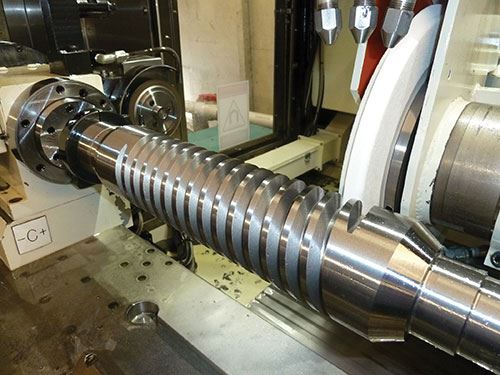
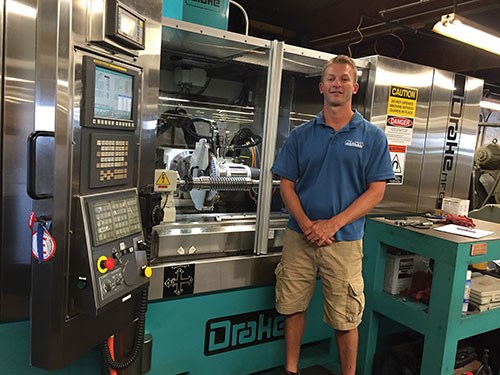
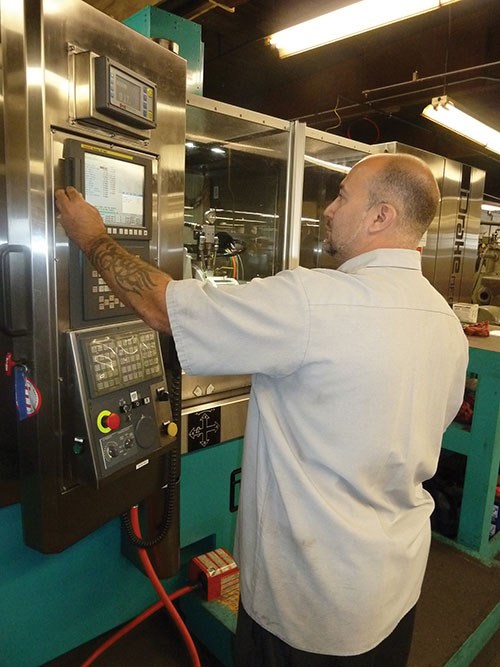
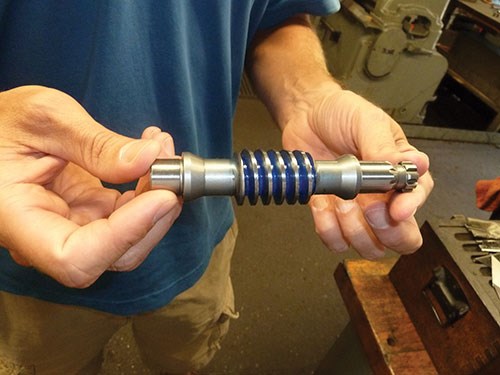
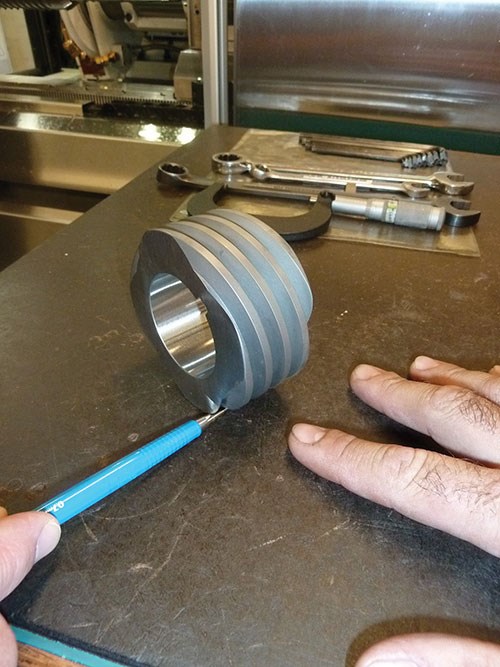




.png;maxWidth=150)





































